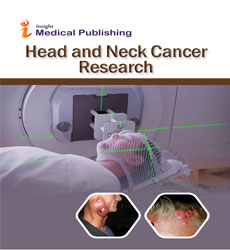Abstract
A clinico-pathological study of squamous cell carcinoma of gingivobuccal complex in Punjab
Background: Head and neck cancers are among the 10 most frequent cancers and are the sixth most common cancers worldwide. Among these cancers, oral cavity in general and gingivobuccal complex in particular is prone to a myriad of changes with advancing age as well as a result of environmental and lifestyle-related factors. The objective of this study was to gain appreciation of the correlation of clinical presentation and habit patterns as well as to note the pathological differentiation and the TNM (Tumour, Node, Metastasis) classification of squamous cell carcinoma (SCC) of gingivobuccal complex in Punjab.
Materials And Methods: This prospective study was conducted on 30 patients of diagnosed cases of SCC of the gingivobuccal complex in the department of ENT and department of pathology of Government Medical College and Rajindra Hospital, Patiala, Punjab, India. The selected patients were those who reported a definitive history of ulcerative lesion of gingivobuccal complex. Detailed history of patients was taken and tumour data including site, subsite, grade and TNM stage were collected.
Results: The mean age of the patients was 52.53 ± 12.91 years. There were 83.33% male and 16.67% female patients. The most common presenting symptoms of SCC of gingivobuccal complex were ulceration, pain and mass in the oral cavity (in all cases) followed by trismus. The most common substance abuse observed was tobacco use. The most common subsite of SCC of gingivobuccal complex was buccal mucosa. The majority of the patients presented in stages I and III (26.67% each). SCC of the buccal mucosa was positively correlated with alcohol use, but the association was statistically non-significant (r= 0.01), but it was positively correlated with smoking and tobacco use (in other form) and the correlation was statistically significant (r= 0.553 and 0.517).
Author(s):
Manjit Singh
Abstract | PDF
Share this

Google scholar citation report
Citations : 28
Head and Neck Cancer Research received 28 citations as per google scholar report
Abstracted/Indexed in
- Google Scholar
- JournalTOCs
- China National Knowledge Infrastructure (CNKI)
- WorldCat
- Publons
- Secret Search Engine Labs
Open Access Journals
- Aquaculture & Veterinary Science
- Chemistry & Chemical Sciences
- Clinical Sciences
- Engineering
- General Science
- Genetics & Molecular Biology
- Health Care & Nursing
- Immunology & Microbiology
- Materials Science
- Mathematics & Physics
- Medical Sciences
- Neurology & Psychiatry
- Oncology & Cancer Science
- Pharmaceutical Sciences


